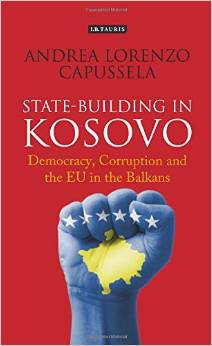State-Building in Kosovo: Democracy, Corruption and the EU in the Balkans
di Andrea Lorenzo Capussela
casa editrice: I.B.Tauris & Co Ltd
anno di pubblicazione: 2015
pagine: 320
prezzo: £29.95

The history of Kosovo is a complicated one which typifies the darker side of modern Balkan history. A loose entity for most of its history, it was an autonomous province under communist Yugoslavia and succumbed to bloody ethnic war in the 90s as long-term tensions between its historic Albanian and Serbian populations were exposed during the Yugoslav wars. Milosevic’s Serbia finally withdrew from Kosovo in 1999, after sustained bombing from NATO, and the province was handed over to a special UN body who governed until 2008, when the West allowed Kosovo to become independent. The aim was to erect a stable and well-governed democracy, but the outcome was a fragile state, which still threatens the stability of the Balkans and Europe’s internal security.
How did this happen? Here, Andrea Lorenzo Capussela offers an inside look at the process of building democracy in Kosovo. As head of the economics unit of Kosovo’s international supervisor, Capussela has had access to previously unknown sources and information regarding the roles of the EU and the US in the crisis. This will be an essential primary source for those studying the Kosovo crisis, the modern history of the Balkans and the theory and practice of state-building.
Andrea Lorenzo Capussela has a PhD on the cross-border aspects of competition policy from the University of Milan. He then moved to Kosovo, where until the end of March 2011 he was the head of the economics unit of the International Civilian Office. He has appeared in the Guardian and The Economist as a commentator on the region. He lives in Milan.



